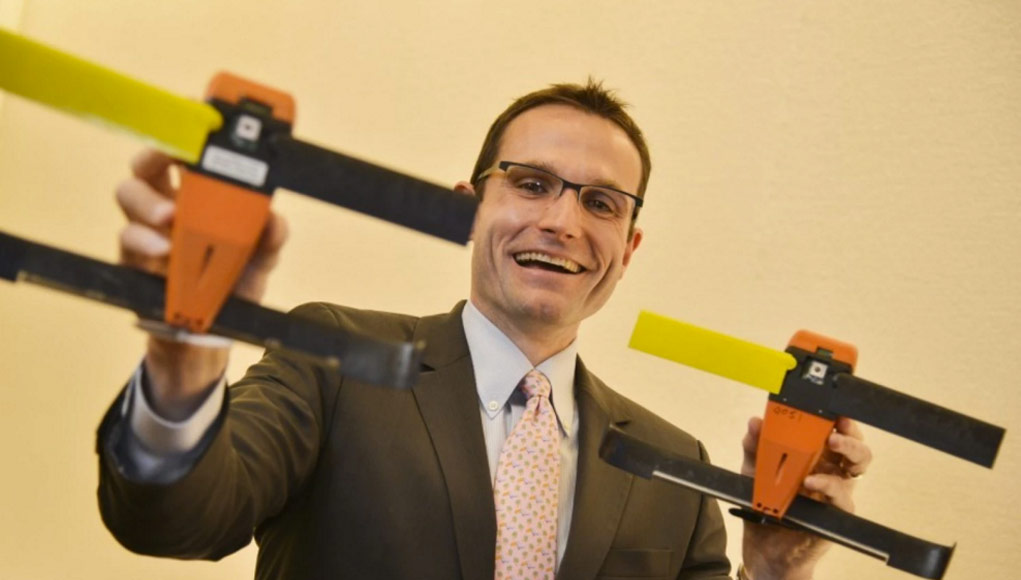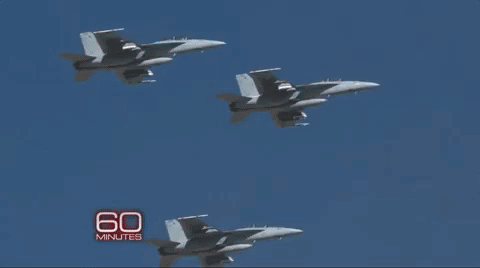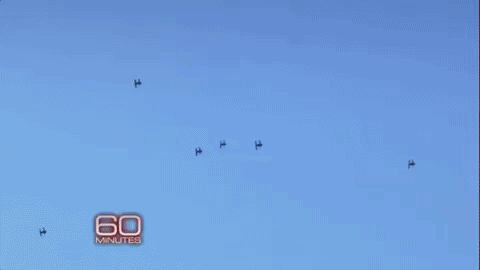Samee Ulhaq
FULL MEMBER
New Recruit
- Joined
- Dec 23, 2013
- Messages
- 81
- Reaction score
- 0
- Country
- Location
Ejected from a fighter, the tiny drones collaborate to accomplish their mission—with not a single human involved..
Three F-18 fighter jets scream over the California desert. They leave 104 tiny capsules in their wake. These capsules, each one smaller than a shoebox, flutter down on parachutes then break open and take flight. Part of the Pentagon’s Perdix project, developed by MIT’s Lincoln Labs, these unmanned autonomous vehicles fly as a swarm, reeling and pitching like a flock of crows.
https://www.dvidshub.net/3c43bada-c677-44fc-bcee-77ccc6064d97
Drones, able to perform missions that are too dangerous or difficult for humans, are the future of warfare. United States audiences got a first look at this future on Sunday’s edition of 60 Minutes, with a story featuring Perdix, which were the subject of this Washington Post report in March.


“They flash in the sun as they come into view,” says William Roper, head of the secretive Strategic Capabilities Office, on the broadcast. He’s visibly anxious about demonstrating such a large swarm with CBS’s cameras running, but the drones swoop and swarm, converging neatly into a cohesive unit.

Roper’s group develops futuristic military technologies, functioning a lot more like a Silicon Valley start-up than a government agency, bringing these new technologies into existence relatively quickly.
Autonomous technologies have advanced to the point that they can make decisions more quickly and precisely than humans in many cases. But in the case of military UAVs, they raise a host of ethical questions. Chiefly, can we allow machines to take human lives without human intervention? And while UAVs are not quite to the point of working independently, events of the past year suggest that these questions are already relevant.
Before we get too far into the ethical weeds, let’s talk about how Perdix works. First of all, even though Perdix comprises a swarm of over 100 individuals, they operate as a unit. Think of them more like components of a whole than as individuals. The F-18 deploys the drones from its flare dispenser, the compartment from which a pilot would normally deploy heat-seeking missile countermeasures. Even though the drones are relatively small, the streamlined jet doesn’t exactly have a ton of extra storage space, so the flare dispenser is the best option.

As the individual drones come on line, they tell each other what they’re doing and where they are. The Perdix drones, which use 3D-printed components that are easy to replace, can make decisions much more quickly than a human could control them. It may look chaotic, but the swarm is highly orchestrated.
“This is one of the riskiest, most exciting things that’s coming out of the Pentagon,” says Roper.
Perdix is not the United States military’s first crack at autonomous battlefield technology, but it is unique in that it is not primarily an offensive tool. “Perdix can be used as decoys to confuse enemy air defenses or equipped with electronic transmitters to jam their radar,” reports 60 Minutes correspondent David Martin. “As a swarm of miniature spy planes fitted with cell phone cameras, they could hunt down fleeing terrorists.”
Unlike soldiers, who need specific orders to complete a mission, operators can give Perdix a general order and figure out the specifics on their own. On Sunday’s 60 Minutes broadcast, Roper explains that the 104 Perdix drones have been ordered to patrol a 3-mile area, but not how to do it.
The UAVs still have kinks to work out, such as battery life. The Perdix drones swarm for a while, then lose power and drift to the ground. But 60 Minutes reports that they could be operational by the end of 2017. Roper sounds optimistic about the implications of this project: “I think autonomy’s gonna change everything.”
Perdix has been a known program since March 2016, when the Washington Post revealed footage of a F-16 fighter releasing 20 drones over Alaska. At the time, however, the Post stated the drones had already been undergoing flight testing for two years.
There are a multitude of uses for such a drone swarm. The drones could be released by fighters to provide reconnaissance for troops on the ground, hunting enemy forces and reporting their location. They could also jam enemy communications, form a wide-area flying communications network, or provide persistent surveillance of a particular area. They could be loaded with small explosive charges and attack individual enemy soldiers. In air-to-air combat, they could spoof enemy radars on aircraft, ground vehicles, and missiles by pretending to be much larger targets.

The drones are a pet project of the Strategic Capabilities Office, which is in turn part of the Pentagon's Third Offset Strategy. Third Offset is designed to use America's technological edge and combine it with new ideas to maintain dominance against potential adversaries. Other concepts include the "Arsenal Plane", which uses older, larger aircraft such as the B-52 to act as a flying arsenal for newer planes like the F-35, carrying a vast number of weapons that can be fired on cue.
Three F-18 fighter jets scream over the California desert. They leave 104 tiny capsules in their wake. These capsules, each one smaller than a shoebox, flutter down on parachutes then break open and take flight. Part of the Pentagon’s Perdix project, developed by MIT’s Lincoln Labs, these unmanned autonomous vehicles fly as a swarm, reeling and pitching like a flock of crows.
https://www.dvidshub.net/3c43bada-c677-44fc-bcee-77ccc6064d97
Drones, able to perform missions that are too dangerous or difficult for humans, are the future of warfare. United States audiences got a first look at this future on Sunday’s edition of 60 Minutes, with a story featuring Perdix, which were the subject of this Washington Post report in March.


“They flash in the sun as they come into view,” says William Roper, head of the secretive Strategic Capabilities Office, on the broadcast. He’s visibly anxious about demonstrating such a large swarm with CBS’s cameras running, but the drones swoop and swarm, converging neatly into a cohesive unit.

Roper’s group develops futuristic military technologies, functioning a lot more like a Silicon Valley start-up than a government agency, bringing these new technologies into existence relatively quickly.
Autonomous technologies have advanced to the point that they can make decisions more quickly and precisely than humans in many cases. But in the case of military UAVs, they raise a host of ethical questions. Chiefly, can we allow machines to take human lives without human intervention? And while UAVs are not quite to the point of working independently, events of the past year suggest that these questions are already relevant.
Before we get too far into the ethical weeds, let’s talk about how Perdix works. First of all, even though Perdix comprises a swarm of over 100 individuals, they operate as a unit. Think of them more like components of a whole than as individuals. The F-18 deploys the drones from its flare dispenser, the compartment from which a pilot would normally deploy heat-seeking missile countermeasures. Even though the drones are relatively small, the streamlined jet doesn’t exactly have a ton of extra storage space, so the flare dispenser is the best option.

As the individual drones come on line, they tell each other what they’re doing and where they are. The Perdix drones, which use 3D-printed components that are easy to replace, can make decisions much more quickly than a human could control them. It may look chaotic, but the swarm is highly orchestrated.
“This is one of the riskiest, most exciting things that’s coming out of the Pentagon,” says Roper.
Perdix is not the United States military’s first crack at autonomous battlefield technology, but it is unique in that it is not primarily an offensive tool. “Perdix can be used as decoys to confuse enemy air defenses or equipped with electronic transmitters to jam their radar,” reports 60 Minutes correspondent David Martin. “As a swarm of miniature spy planes fitted with cell phone cameras, they could hunt down fleeing terrorists.”
Unlike soldiers, who need specific orders to complete a mission, operators can give Perdix a general order and figure out the specifics on their own. On Sunday’s 60 Minutes broadcast, Roper explains that the 104 Perdix drones have been ordered to patrol a 3-mile area, but not how to do it.
The UAVs still have kinks to work out, such as battery life. The Perdix drones swarm for a while, then lose power and drift to the ground. But 60 Minutes reports that they could be operational by the end of 2017. Roper sounds optimistic about the implications of this project: “I think autonomy’s gonna change everything.”
Perdix has been a known program since March 2016, when the Washington Post revealed footage of a F-16 fighter releasing 20 drones over Alaska. At the time, however, the Post stated the drones had already been undergoing flight testing for two years.
There are a multitude of uses for such a drone swarm. The drones could be released by fighters to provide reconnaissance for troops on the ground, hunting enemy forces and reporting their location. They could also jam enemy communications, form a wide-area flying communications network, or provide persistent surveillance of a particular area. They could be loaded with small explosive charges and attack individual enemy soldiers. In air-to-air combat, they could spoof enemy radars on aircraft, ground vehicles, and missiles by pretending to be much larger targets.

The drones are a pet project of the Strategic Capabilities Office, which is in turn part of the Pentagon's Third Offset Strategy. Third Offset is designed to use America's technological edge and combine it with new ideas to maintain dominance against potential adversaries. Other concepts include the "Arsenal Plane", which uses older, larger aircraft such as the B-52 to act as a flying arsenal for newer planes like the F-35, carrying a vast number of weapons that can be fired on cue.
